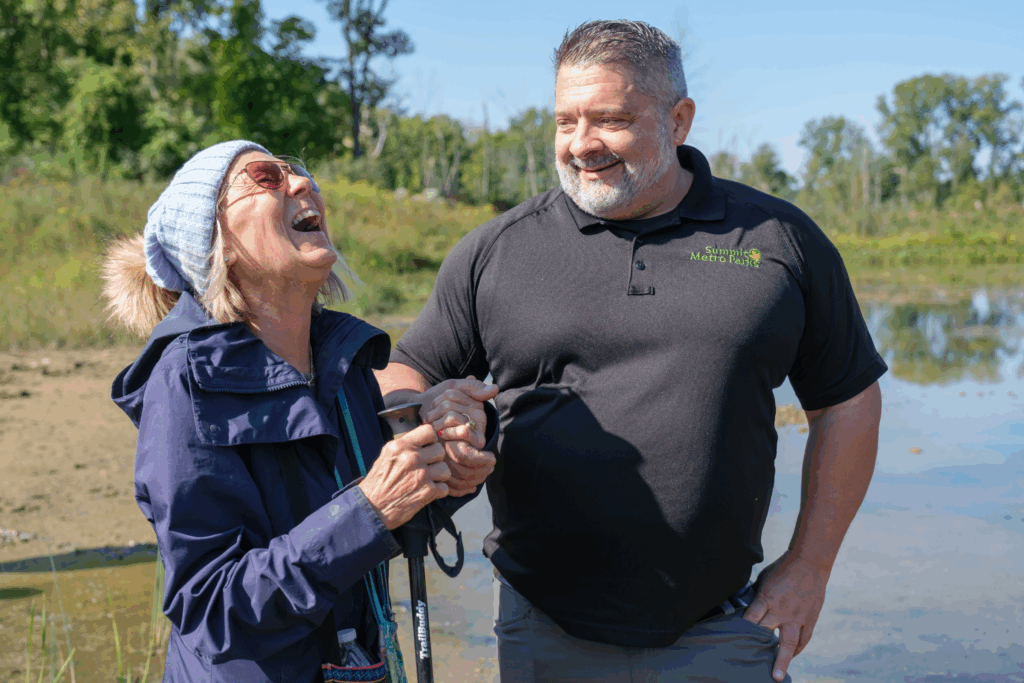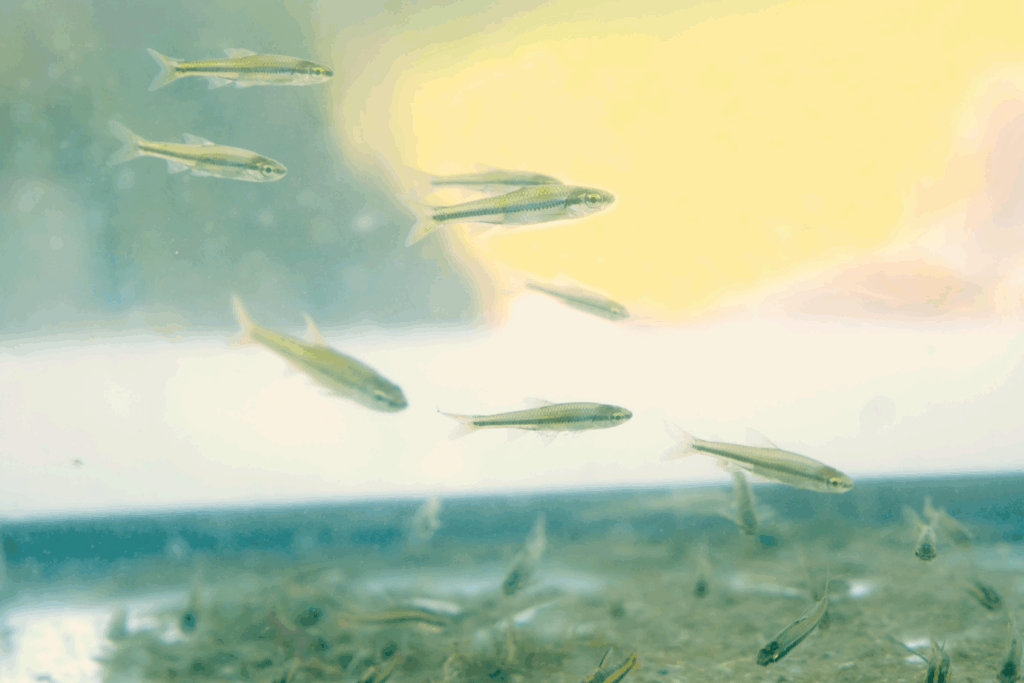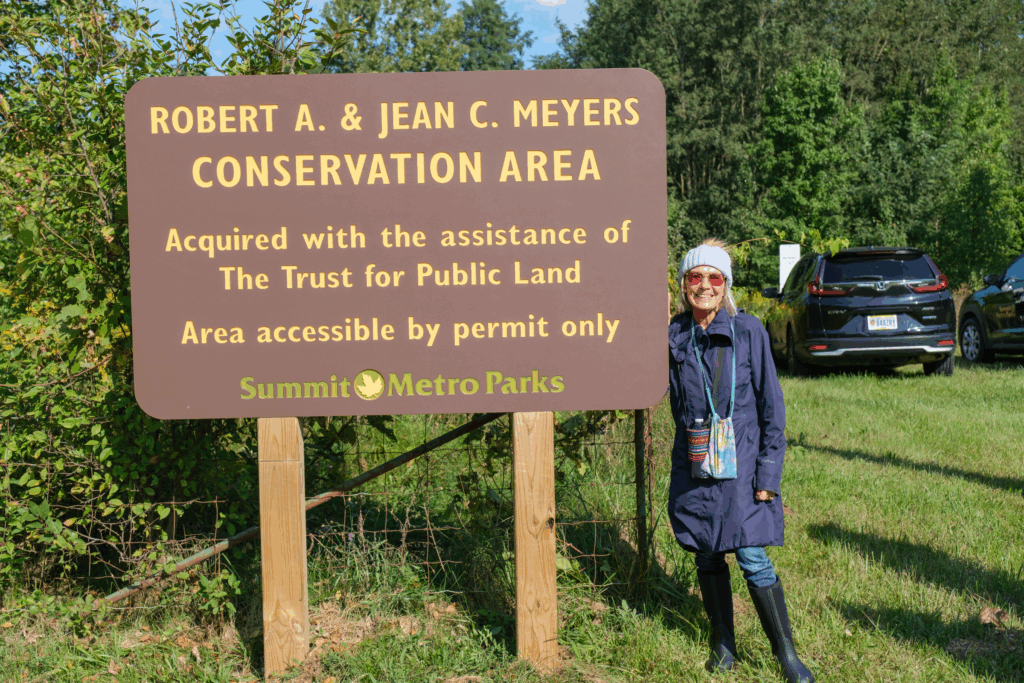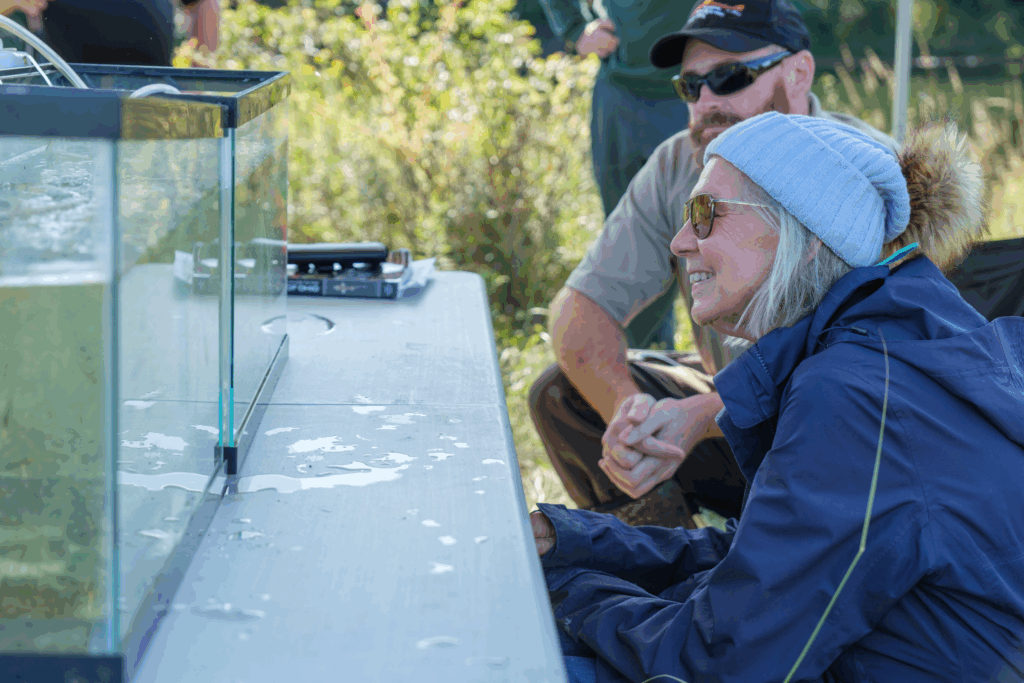
You may have never heard of blacknose shiners, blackchin shiners, lake chubsuckers, Iowa darters, least darters and western banded killifish, but they were once common in the Portage Lakes and throughout the clear, clean waters of Ohio until development pressure, loss of habitat and pollution pushed them to the brink of extinction.
These fish are now thriving at a Summit Metro Parks conservation area, along with thousands of other species including over 20 species designated as endangered or protected. Rare plants include the state-endangered scoring rush and state-listed prickly pear cactus that flourish in the sandy soils.

But how did Marilyn Buckey and conservation organizations save this place and the extremely rare glacial lake fish that now live there?
The Robert A. and Jean C. Meyers Conservation Area, named for Marilyn’s parents, is located along the northern shore of Long Lake. It was designated for conservation by The Trust for Public Land, an organization that worked with Marilyn to fulfill her vision of protecting the property. Subsequently, the area was donated to Summit Metro Parks in 2008.
This 134-acre conservation area is characterized by vast wetlands, marshes and swamp woods. While not open to the public, this preserve is working hard to benefit the people of Summit County. This natural area and others like it are cleaning our water and purifying (and actually creating) our air. The forests in these reserves are pulling carbon from our atmosphere and helping to mitigate the dangers of climate change. But the greatest value of these untouched areas is they are home to a host of species, many of which are on the verge of extinction. One study conducted by the Summit Metro Parks conservation department indicated the area provides over two million dollars in ecosystem services and annually removes 68 tons of carbon dioxide from the air, helping to mitigate the effects of climate change.

But the area truly shines in terms of the biodiversity it supports.
One of the most interesting and surprising twists in the story has to do with how the area was used in a former life. In the past, a small portion of the property was mined for sand and gravel, and deep ponds were left behind that filled with crystal clear groundwater. These were artificial features and at the time not considered to be significant assets to the natural landscape. But everything changed in 2017 when we partnered with The Ohio Division of Wildlife, the United States Fish and Wildlife Service and The Ohio State University. When Summit Metro Parks began to work with these partners on breeding and reintroduction of the fish, we looked for suitable areas for reintroduction. While the old gravel ponds were not natural waterbodies, they did mimic many of the conditions of glacial lakes … so we gave it a try. Several hundred of the six species of tiny, colorful fish were stocked into the old quarry ponds over the course of three years. The project has been more successful than anyone ever imagined.

During a monitoring visit in 2024, former owner Marilyn Buckey joined park biologists and saw some of these beautiful fish up-close. Summit Metro Parks is thankful to our partners at Trust for Public Land and Marilyn Buckey who made the preserve a reality. We will continue to steward and protect these resources for the benefit of Summit County residents.

The Summit Metro Parks Foundation – A lasting local impact, because of You! Find out how you can make a lasting local impact.
For more stories like this, check out Green Islands magazine, a bi-monthly publication from Summit Metro Parks. Summit County residents can sign up to receive the publication at home free of charge.